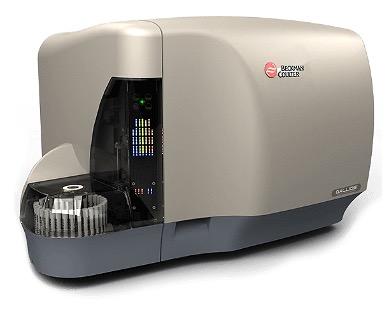Prostate Cancer Identified By Profiling Immune Cell Subsets
By LabMedica International staff writers
Posted on 19 Aug 2020
With an estimated 1.8 million new cases in 2018 alone, prostate cancer is the fourth most common cancer in the world. Diagnosing the disease early increases the chances of survival, but this cancer remains difficult to detect.Posted on 19 Aug 2020
The best diagnostic test currently available measures the blood level of a protein called the prostate-specific antigen (PSA for short). Heightened amounts of PSA may mean that the patient has cancer, but 15% of individuals with prostate cancer have normal levels of the protein.

The Gallios 10-color/3-laser flow cytometer (Photo courtesy of Beckman Coulter).
A team of scientists at Nottingham Trent University (Nottingham, UK) and their colleagues obtained peripheral blood samples from individuals suspected of having prostate cancer that attended the Urology Clinic at Leicester General Hospital (Leicester, UK) between 24th October 2012 and 15th August 2014. Peripheral blood (60 mL) was collected from all patients using standard clinical procedures, and the peripheral blood mononuclear cell (PBMC) fraction was harvested. The PBMCs were processed and incubated with a monoclonal antibody (mAb) panel. Data on viable cells were acquired within 1 hour using a Gallios 10-color/3-laser flow cytometer (Beckman Coulter, Indianapolis, IN, USA).
The team collected and examined the natural killer cells of 72 participants with slightly elevated PSA levels and no other symptoms. Amongst these, 31 individuals had prostate cancer and 41 were healthy. These biological data were then used to produce computer models that could detect the presence of the disease, as well as assess its severity. The algorithms were developed using machine learning, where previous patient information is used to make prediction on new data.
Statistical and computational methods identified a panel of eight phenotypic features (CD56dimCD16high, CD56+DNAM−1−, CD56+LAIR−1+, CD56+LAIR−1−, CD56brightCD8+, CD56+NKp30+, CD56+NKp30−, CD56+NKp46+) that, when incorporated into an Ensemble machine learning prediction model, distinguished between the presence of benign prostate disease and prostate cancer. The machine learning model was then adapted to predict the D’Amico Risk Classification using data from 54 patients with prostate cancer and was shown to accurately differentiate between the presence of low-/intermediate-risk disease and high-risk disease without the need for additional clinical data.
The authors concluded that their study resulted in a new detection tool which was 12.5% more accurate than the PSA test in detecting prostate cancer; and in a detection tool that was 99% accurate in predicting the risk of the disease (in terms of clinical significance) in individuals with prostate cancer. This simple blood test has the potential to transform prostate cancer diagnostics. The study was published on July 28, 2020 in the journal eLife.
Related Links:
Nottingham Trent University
Leicester General Hospital
Beckman Coulter













